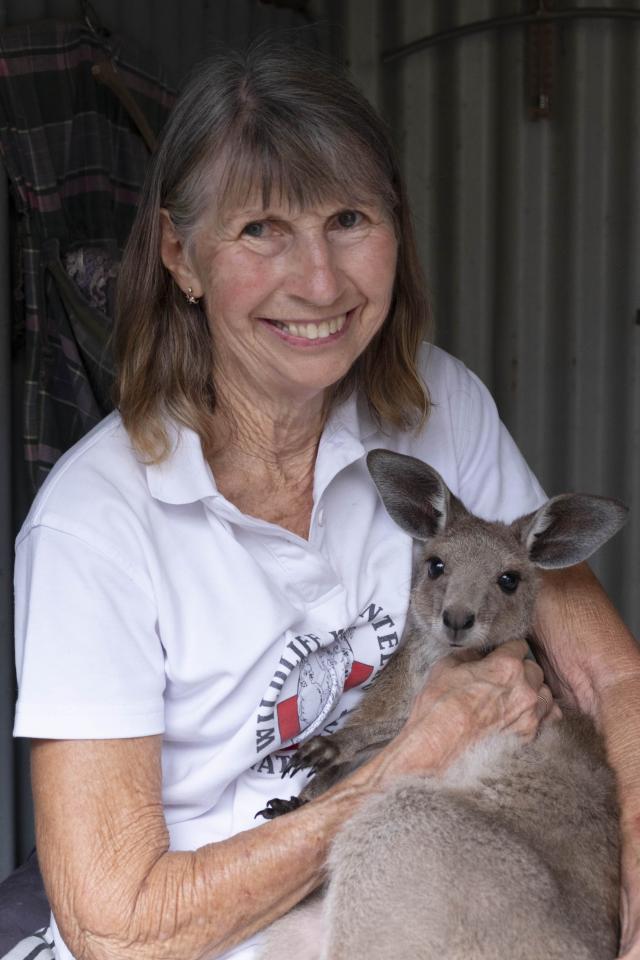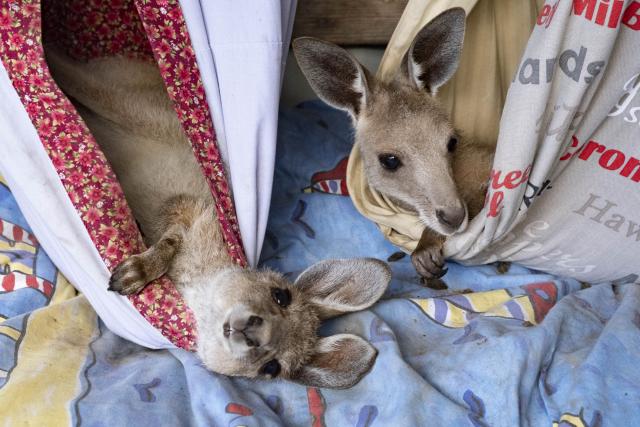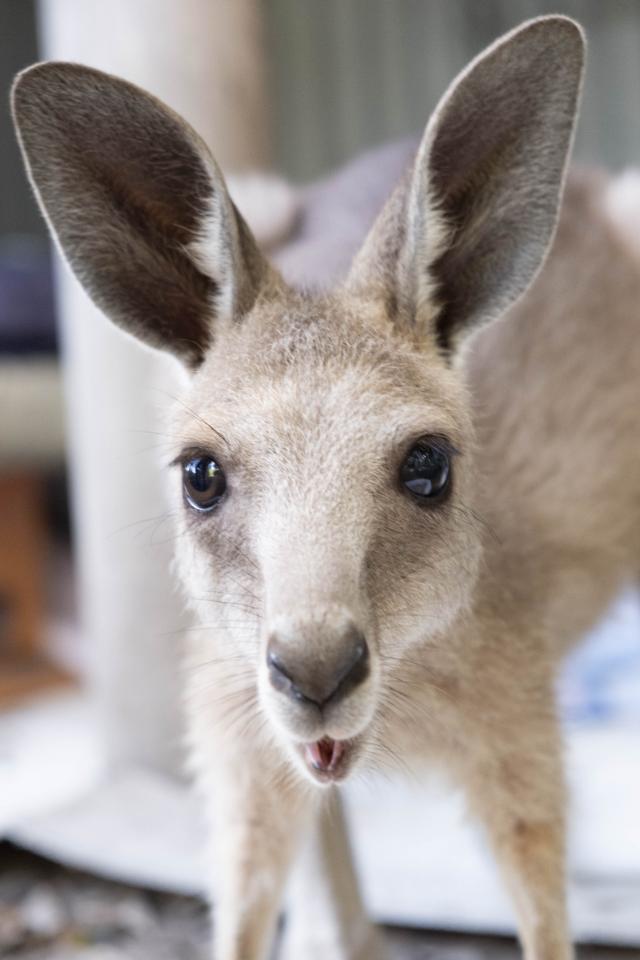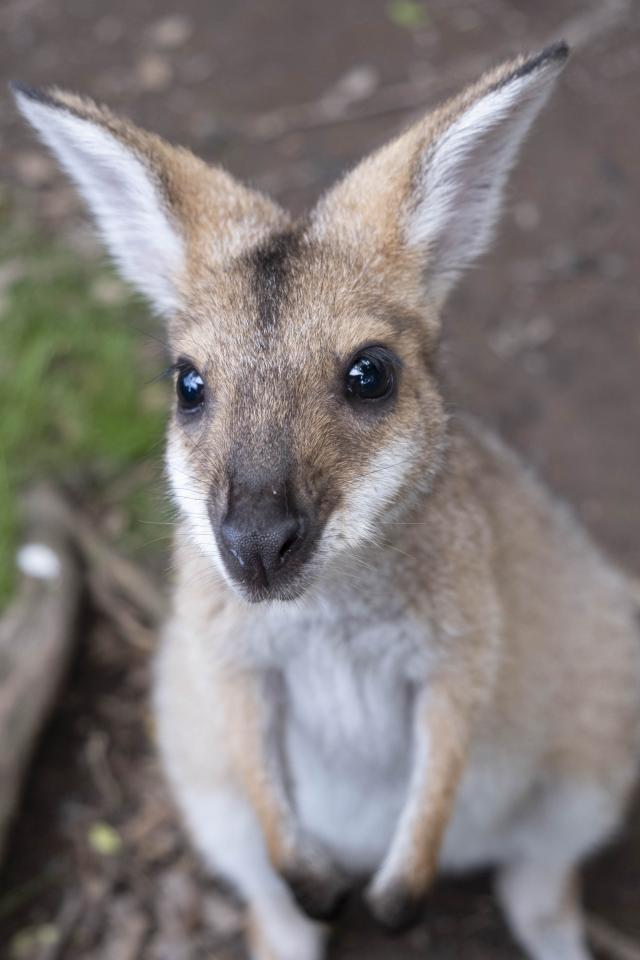Macropods greet by stroking one another’s faces with their front paws, the joeys like a cuddle after feeding, they have best friends, travel everywhere together and become very stressed if a member of their mob is missing.
Macropods, the term used to describe the marsupial family Macropodidae, which includes kangaroos, wallabies and pademelons, live amongst us but few of us know much about their behaviour and no one knows our local wildlife like our dedicated wildlife carers.
In the first of a series on our local wildlife Noosa Today last week visited Sylvia Whiting, chairperson of Wildlife Volunteers Association Inc (WILVOS) and her husband Bob at their 50-acre bushland property at the back of Yandina, where for the past 35 years Sylvia has cared for thousands of injured, orphaned and distressed wildlife and Bob has built their enclosures and hundreds of possum boxes.
Begun in 1986 when an increase of development created a surge of injured, sick and orphaned animals, WILVOS now operates as an incorporated association with more than 250 volunteers and works closely with other services including the Australian Wildlife Hospital, local vets, local businesses, the Sunshine Coast University, local councils and the police, responding to thousands of calls and rescue requests a year.
Sylvia cares for about 400 native animals a year of all types, but kangaroos and wallabies are ’just her thing’.
“The kangaroos are the most gentle and affectionate of the macropods,“ she said. “The swamp wallabies are the most naughty, funny, just great little things,
“They mature quickly and they’re just so cheeky. The red necks are the most layback.
“If you look after any wildlife you know they all have their own personality. They know a lot more than we do. They’re very intuitive the way they act and think.
“They’re very clever.“
Swamp wallabies live mainly solitary lives, while red-neck wallabies and eastern grey kangaroos are colony orientated.
Last week Sylvia had three joeys in her care, two eastern greys and a red-neck, having recently released eight healthy, mature macropods back to the wild.
“They all had their own pecking order, their own friends. You know to move eight is difficult. They all had to fit in the car together.
“They’re less stressed if the whole family is with them. When they get stressed they start licking their legs, they get really hot.“
The three currently in care will stay with Sylvia until they are about 20 months which is the age when males disperse from their mothers in the wild.
Females stay in the mob with their mothers throughout their lives. Sylvia said before release, kangaroos from other wildlife carers that are ready for release would be brought together and as a mob they would be released to reduce the stress.
Sylvia’s macropods, Baxter, Diana and Dana, are a happy trio. They hop about in one of three fenced paddocks, on rotation, during the day and go into their shed to sleep at night in their hammocks.
As pinkies, before they grew fur, the joeys were fed six bottles a day and stayed in Sylvia’s house to keep warm. Even as pinkies they need to build up their leg muscles and the carers stand them on their knees. In their mothers pouch they would kick against the pouch wall.
“If not, they don’t develop their leg muscles properly. They get really sore feet just siting in a pouch with their feet up in the air.“
And if their leg muscles aren’t strengthened before they take their first hops they risk breaking a vital bone in their knee which is irreparable.
Sylvia’s joeys have now moved outside and have a diet of three daily milk bottles, macropod pellets and grasses, leaves and shrubs, depending on their species, but they remain very particular.
“They always come to the same spot to feed, they all like different teats, they’re very fussy,“ Sylvia said.
Sylvia said WILVOs change the joey milk types as they get older and while it as close to mothers milk as they can be, female macropods have
an amazing ability to regulate their reproductive systems. Not only can mothers produce different types of milk to provide the right nutrition to a joey and pinkie at the same time it can retain an embryo, delaying its birth until the season or situation is better suited to its survival.
When we visited the joeys they were well aware of the strangers in their midst.
While not apparent to us, Sylvia recognised their stance was lower to the ground, their ears were flicking back and forwards and their eyes were wide open – they were not relaxed.
“I read by their eyes how well they are or not,“ she said.
In their normal routine after their feed, the joeys demand their cuddles, then it’s play time.
“They zoom around the paddock, hop really fast then do this little flick in the air – you know they’re having a really happy time when they do it,“ Sylvia said.
“They run around, then come back for reassurance, you have to scratch them on the chest, that’s what their mum does, then they go again.“
The gentle macropods best defence is speed. They can easily hop at 25km/hr and some reach speeds up to 70km/hr over short distances.
When something isn’t right in the wild, macropods thump their hind legs down on the ground to create a loud, distinctive warning noise that alerts the mob to danger.
They can bite but rarely do, they can use their strong legs to kick and they don’t mind water, using it for protection if chased by a dog.
“If a dog comes in they can defend themselves, they can drown a dog,“ Sylvia said.
Sylvia discourages her male kangaroos from kicking humans.
“I don’t let the boys throw their weight around or kick me. Some people think it’s funny to play box,“ she said.
“It makes roos think they can do it with everybody. I say no, no and they don’t. If they go up to other people in the wild and box, they’d get shot. They can do it to each other but not to people.“
Knowing how to be a kangaroo and what to eat is instinctive for a macropod but timing for carers is critical.
“You have to let them do it when they want to do it, otherwise they lose all that natural instinct,“ Sylvia said.
“We run workshops on how you care for them. It’s knowledge gained over years. We try to get everyone to do the same thing so all the animals are good.“
When the joeys are old enough to be released, the eastern greys are released as a mob in safe areas, where there are fewer roads, fences and dogs.
The rednecks and swamp wallabies gradually mix with the local mobs that live in the national parkland bordering Sylvia and Bob’s property.
“I let them out in the paddock for a hop around. They come back in when they want to come back in. Eventually I lock them out all night. They’re back in the morning, some are still coming back two months later.“
“Eventually they all grow up, mature and they leave, they join the wild ones.
“They’re very social animals. The mob just accept them.“
Some of Sylvia’s joeys have returned year after year, bringing their joeys with them.
One came every few days after its release. When it disappeared for 10 days Sylvia knew something was wrong. Bob found it in a top paddock, limping and covered in ticks. She had been hit by a car. Sylvia nursed her back to health and she returned each year for eight years.
There are few illnesses that affect wild kangaroos. In captivity they can be infected by a parasite, Coccidia, that infects the intestinal tract and Sylvia is always checking their faeces to ensure there are no parasites. And they are highly susceptible to toxoplasmosis, another parasite, which is spread by cats and can be fatal in kangaroos.
Sylvia and Bob have plenty of stories of the characters in their care including that of a very clever crow Sylvia raised from a baby, that would steal and bury everything including her car keys and had an ongoing dislike of Bob, once setting a trap for him by placing a shard from a smashed glass on his shed floor and covering it with leaves. Bob cut his foot so badly Sylvia had to take him to hospital.
“They’re all characters,“ Bob said. “You think they’ll never leave home, but they’re like teenagers, they eventually go.“
WILVOS maintain a database of all animals in their care and man a 24-hour emergency hotline at 5441 6200.
For more information visit wilvos.org.au












